Cannulated self-tapping screws for bone compression have now been used for several decades. Their main feature is given by the hole across the entire length of the screw itself.
Cannulates screws: main features
Two ways can be used for their realization. The first is to use a material that has already been drilled (a titanium tubular bar), the second is to drill them during the machining phase.
The choice depends on various factors: cost, time, type of drilling.
But what is this driling for?
The drilling allows the cannulated screws to follow the path made by a wire milling machine, also called Kirschner wire, and it is necessary for the positioning of the screw in the bone.
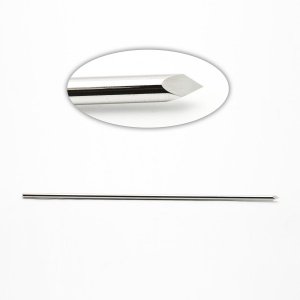 The Kirschner wire (also called K-wire) is a rigid and thin wire that is used in orthopedic surgery to immobilize bone fragments going out from their original location after a compound fracture
The Kirschner wire (also called K-wire) is a rigid and thin wire that is used in orthopedic surgery to immobilize bone fragments going out from their original location after a compound fracture
This technique was introduced in 1909 by surgeon Martin Kirschner, who was the inventor of the first non-invasive procedure in the treatment of complex fractures.
There are various types of cannulated screws, each of which differs from the others for the size and shape of the screws; each screw is specifically designed for a certain type of surgical technique.
The smallest ones are especially useful for fixing bone fragments in elbow, hand and foot surgery. Their diameter varies, approximately, from 2.5 to 3.5mm.
The cannulated screws for shoulder, knee and ankle surgery have diameters between 4.5mm and 6.5mm.
The cannulated screws for hip surgery can be up to 8 mm in diameter.
The peculiarity of these screws is the possibility of being self-tapping. Most of them are also self-drilling.
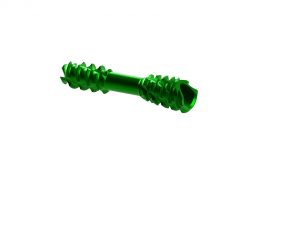
In some particular screws, the shape of the thread also allows to make the cannulated screws self-compressive. This feature is very important in some surgical techniques to better compact the fracture.
Cannulated screws for hip fractures
There are various applications for larger cannulated screws.
They can in fact be used for humeral or femoral fractures.
Medial fractures of the femoral neck usually involve the anatomical zone between the femoral head and the intertrochanteric line; the position and orientation of the fracture associated with the degree of displacement determine the severity of the damage.
Surgerons decide to use cannulated screws when the use of a prosthesis may be premature and according to the characteristics of the fracture. This is because it is much less invasive than a prosthesis and, in case of problems, it does not preclude the subsequent use of a prosthesis.
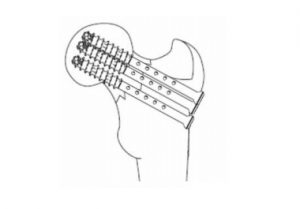
In the picture, you can see a typical use of cannulated screws for fractures of the femoral neck
New generation cannulated screws
Our company has always produced cannulated screws for various surgical techniques, since our first steps in the world of implantable medical devices, At the beginning of the 2000s, thanks to the collaboration with Prof. Marinoni and Drs Mascitti and Gervasoni, we developed a new family of cannulated screws, called: MAAG ® SCREW.
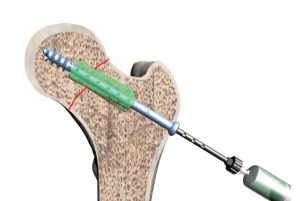
This new type of cannulated screws was born as an evolution of the concept of cannulated screw, suitably modified to favor an even more effective osteosynthesis action, even in unfavorable bone conditions.
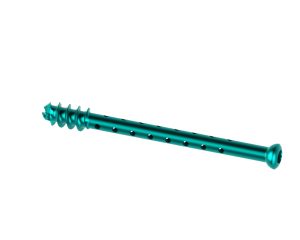
To achieve this result the device is made of titanium alloy and is characterized by a larger diameter and a larger thread.
But why are this kind of cannulated screws truly innovative?
The main feature is a series of holes, visible in the image above, which affect the central area of the device. These holes, which are present in a section equal to 60% of the total length, are made according to a helical pattern to facilitate the uniform release around the device of an appropriate augmentation means, through a dedicated injection system.
The MAAG ® SCREW, therefore, is a medical device developed with the general purpose of reducing a fracture of various types and favoring the osteosynthesis process in a short time, also having the possibility of conveying an augmentation means.
Its realization from a technological and production level is certainly not easy.
The thickness of the wall, the geometry of the threads and the transverse holes on 60% of the length have created many problems at the beginning.
We had to go through the so-called “learning” phase, but after having found the right precautions, both in terms of technology and the preparation of the operators involved, the production of these highly technological and special cannulated screws has become normal.
For more information on this screw, distributed by our subsidiary OVERMED Srl, please visit the website: https://www.overmed.eu/
For further information and to discover more about our company: https://rebrand.ly/LegheLeggereSEO

